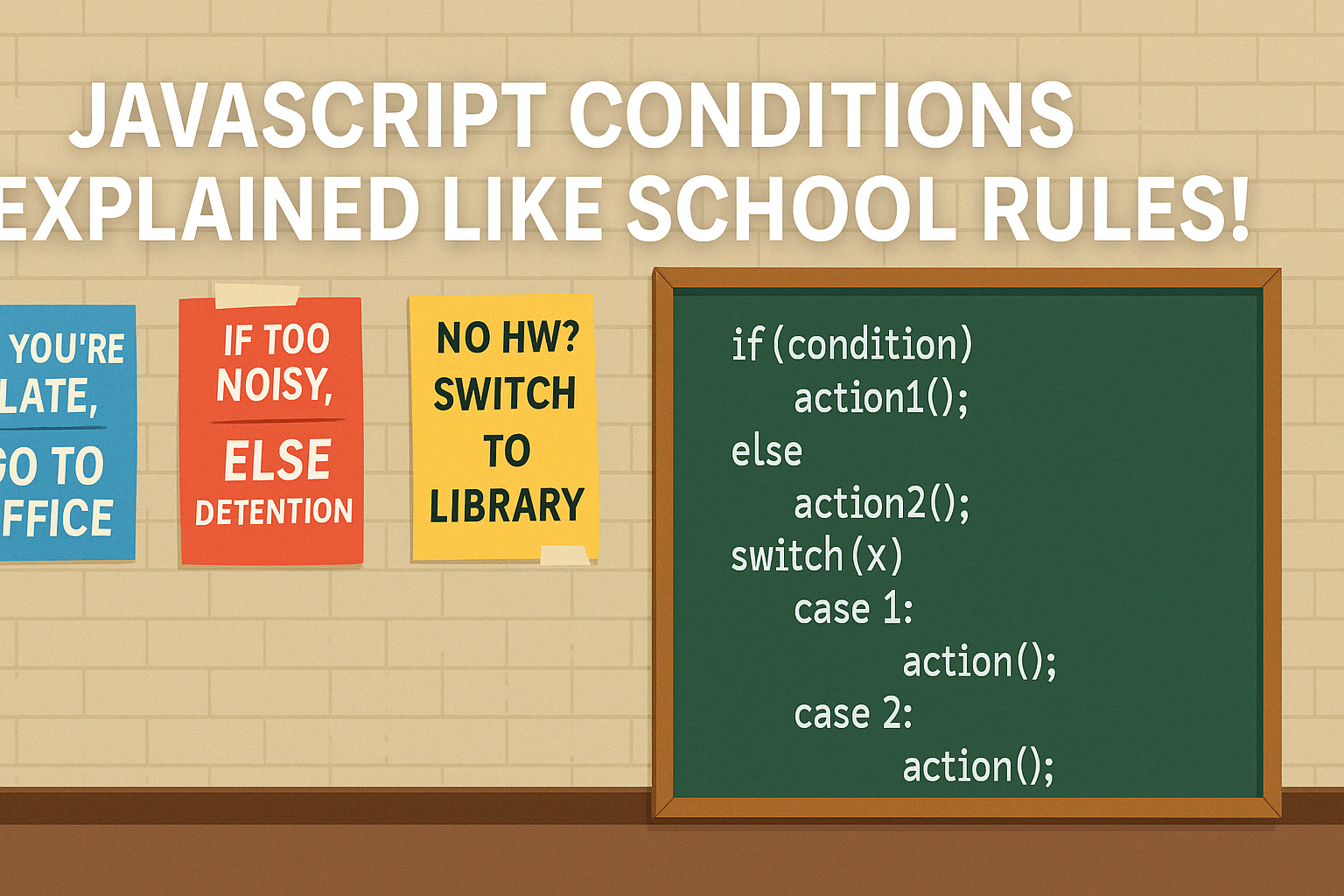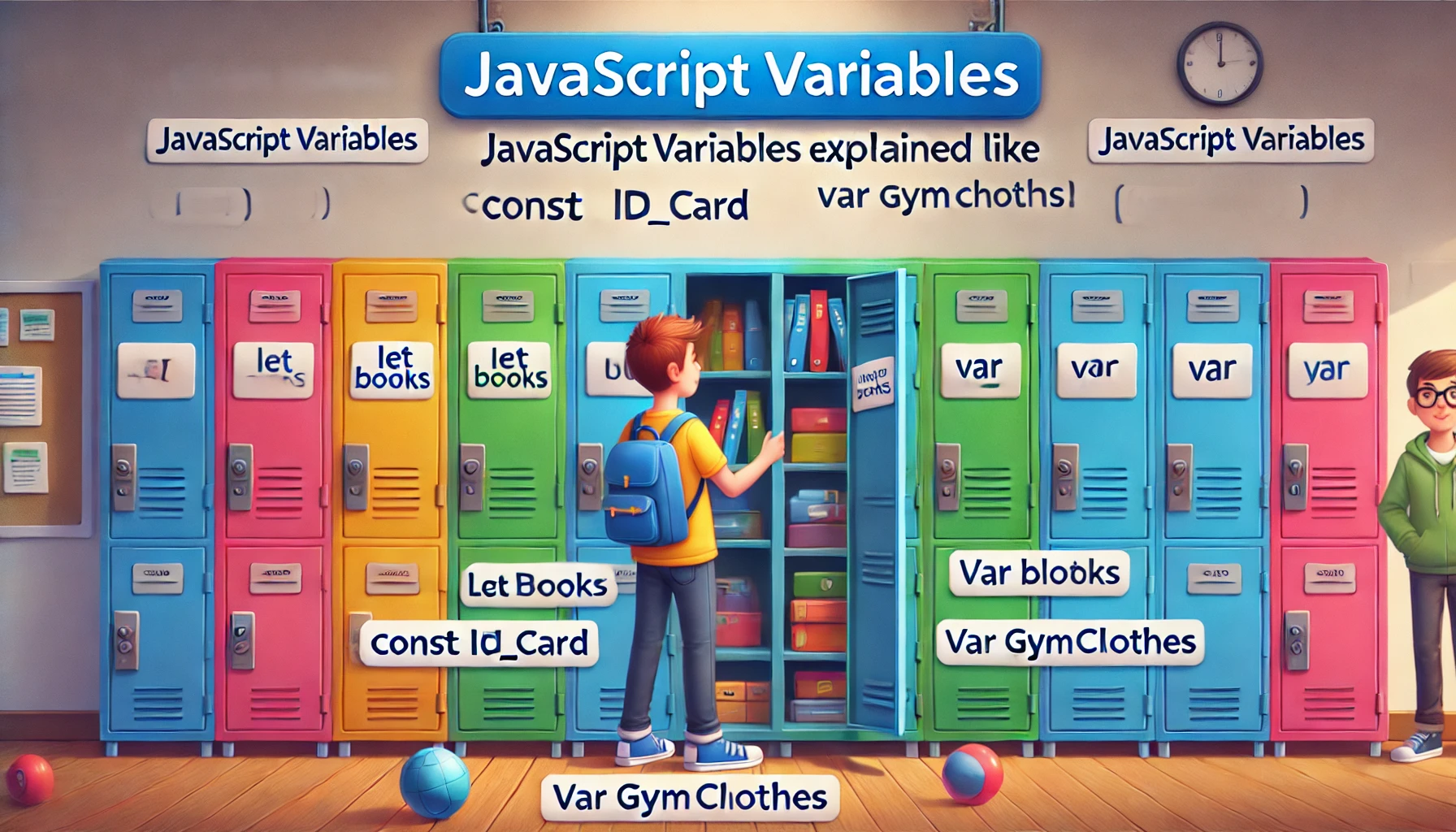Introduction
Imagine being in school where rules guide your behavior—”If you’re late, you must go to the principal’s office” or “If it’s lunch break, go to the cafeteria.” These rules decide what happens in different situations. In JavaScript, we have something similar: conditional statements.
JavaScript conditions help your code make decisions, just like school rules help keep order. In this guide, we’ll use school-related examples to explain if-else statements, else-if chains, switch cases, and ternary operators.
if Statements = Basic Rules
The most basic rule in school: “If you’re late, go to the office.” In JavaScript:
let isLate = true;
if (isLate) {
console.log("Go to the principal's office.");
}
📌 Key Takeaway: The if statement checks a condition and runs the code block only if the condition is true.
if-else = Clear Alternatives
School Rule: “If it’s lunchtime, go to the cafeteria. Else, stay in class.”
let isLunchTime = false;
if (isLunchTime) {
console.log("Go to the cafeteria.");
} else {
console.log("Stay in class.");
}
📌 Key Takeaway: Use else when you want an alternative outcome if the condition isn’t met.
else-if = Multiple Rules, One Outcome
School Rule: “If it’s Monday, wear blue. If it’s Wednesday, wear green. If it’s Friday, wear sportswear. Else, wear uniform.”
let day = "Wednesday";
if (day === "Monday") {
console.log("Wear blue.");
} else if (day === "Wednesday") {
console.log("Wear green.");
} else if (day === "Friday") {
console.log("Wear sportswear.");
} else {
console.log("Wear the standard uniform.");
}
📌 Key Takeaway: Use else if to handle multiple specific conditions one after another.
switch Statements = School Announcements
Think of switch statements like a morning announcement system. Based on the class name, the speaker announces a specific message.
let className = "Grade 10";
switch (className) {
case "Grade 9":
console.log("Today is your library day.");
break;
case "Grade 10":
console.log("Today is your science lab.");
break;
case "Grade 11":
console.log("Today is your sports day.");
break;
default:
console.log("Regular classes today.");
}
📌 Key Takeaway: switch is great when you have many options based on the same value.
Ternary Operators = Quick Decisions
School Rule: “If you score above 50, you pass. Otherwise, you fail.”
let score = 72;
let result = score > 50 ? "Pass" : "Fail";
console.log(result);
📌 Key Takeaway: Ternary operators are a shorthand way to write simple if-else conditions.
Common Mistakes to Avoid
- Forgetting curly braces
{}for multiple lines - Using
=(assignment) instead of===(comparison) - Missing the
breakin switch cases - Overusing nested
ifstatements (which can make code hard to read)
🎓 Real-Life Project Ideas Using Conditions
✅ Create a grade-based feedback system (A, B, C, Fail)
✅ Build a traffic light logic simulator
✅ Design a quiz scoring engine
✅ Make a login condition check (if username and password match)
Conclusion: Conditions = Discipline for Code
Just like schools rely on rules to guide student behavior, JavaScript uses conditions to guide program flow. Whether it’s deciding what message to show, what color to display, or what action to take, conditions bring logic and order to your code.
✅ Start with simple if and if-else checks
✅ Use else-if for complex branches
✅ Try switch for value-based decisions
✅ Use ternary for quick checks
📌 With this school rule analogy, you’ll remember JavaScript conditions as the guiding rules for your code’s behavior.
🎓 Up Next: JavaScript Events Explained Like School Announcements!



